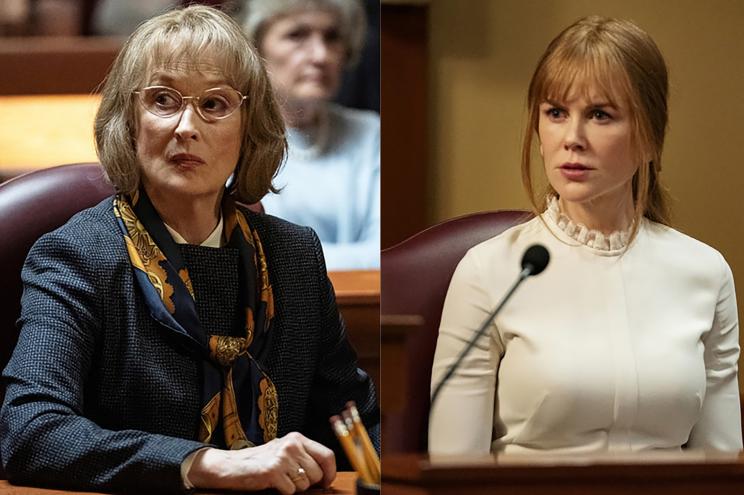Warning: Major spoilers from the season finale of “Big Little Lies” below.
An underwhelming series finale of HBO’s “Big Little Lies” was highlighted by the evisceration of Mary Louise Wright (Meryl Streep) on the witness stand by her daughter-in-law Celeste (Nicole Kidman).
Celeste’s legal strategy for making sure her mother-in-law did not get custody of her twins was to interrogate Mary Louise about a car accident that led to the death of her son, Raymond, which probably happened 40 years ago. Mary Louise lost her temper and apparently blamed the tragedy on poor Perry (Alexander Skarsgärd).
Executive producer David E. Kelley links this single incident to Perry’s well-documented marital abuse of Celeste, which she played on video (shot by one of her young twins) in the courtroom, shocking everyone — including the other members of the “Monterey Five” and Mary Louise herself.
With his brilliant track record of success on network TV, Kelley naturally would try to give nearly everyone a happy ending.
Ed (Adam Scott) and Madeline (Reese Witherspoon) renewed their wedding vows on the beach. Jane (Shailene Woodley) gave in to her attraction to the guy from the aquarium. Celeste got full custody of her boys. Only Renata (Laura Dern) was left with another mess to clean up — her obnoxious husband, Gordon (Jeffrey Nordling), thinking their bankruptcy problems were solved by selling his train set for six figures while Renata has lost everything she loved, including her self-respect.
As for Bonnie (Zoe Kravitz), she finally did the right thing and walked right into the Carmel By The Sea police station, only after losing her mother (Crystal Fox) and telling her husband (James Tupper) that she never really loved him.
The main problem here is that “Big Little Lies” in the end did not play like an HBO series. We are a long way from Tony Soprano sitting with his family in the New Jersey ice cream parlor and the screen going black, a risky ending for a network that made its reputation on the mob drama.
“Big Little Lies” showed that four white women can conspire to keep a murder (justifiable homicide) secret and still have their ironed hair, wonderful clothes and waterfront property. There were no consequences.
The earlier episodes satisfyingly showed each of the women watching parts of their lives crumble — but Kelley must have felt that tidy was the way to go in the end. A disappointment for a series that didn’t really need to go to a second season. If this was the end Kelley had envisioned, he could’ve accomplished the same effect in a two-hour TV movie. We didn’t even see Zoe’s confession. Mary Louise never gets the satisfaction of knowing how her son died. Isn’t that why she drove down to Monterey from San Francisco?
After all the hype regarding Season 2 died down, quibbles about the quality of the production began to surface on social media. After the resplendent seaside atmospherics of Season 1, we were treated to more scenes in cars, cafes, living rooms, courtrooms and offices than you could shake a stick at. This flat treatment screams network TV, from about 20 years ago. Then reports broke in the Hollywood trades that director Andrea Arnold, who did not attend the New York premiere, was somehow muscled out of the production by executives and other men who took over the editing process.
The diffident directing style makes sense in light of these backstage murmurings. Everyone clamored for more “Big Little Lies” after Season 1, not realizing that what they had seen was as good as the show was going to get. They complained that what they were looking at felt like a soap. Were they expecting Chekhov, perhaps? It’s a case of Hollywood hype being severely undercut by tepid, tame narrative decisions.
As good as the cast was, they couldn’t quite lift “Big Little Lies” above the ordinary.

